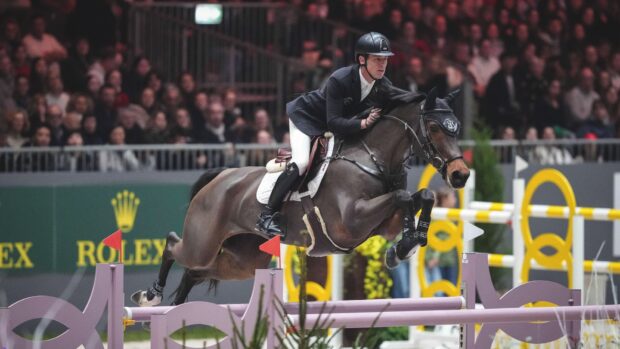A new British Riding Clubs (BRC) rule on whip use has been introduced to help educate riders and improve horse welfare.
BRC’s 2023 rules state that the whip must only be used to support the rider’s natural aids, and never when a horse or pony has turned away after a refusal, or after elimination. Use behind the rider’s leg or on the shoulder is allowed but never on the horse’s head or neck.
Head of BRC Rachael Hollely-Thompson told H&H the organisation, which is part of the British Horse Society (BHS), “takes horse welfare incredibly seriously”.
“Horse welfare is something we talk about every day; it’s always at the forefront of our minds,” she said. “The BHS is in a unique position as it has great links with other welfare organisations continually doing studies and research on whip use.
“We reflected on what we’d like members to be doing and the crux was that the whip has to back up natural aids, but it shouldn’t be used to punish.”
The rules state that appropriate whip use can be to help encourage a horse or pony to go forward, or to stay straight on the approach to a fence. “It must never be used to vent a rider’s temper; any use for such a reason is automatically excessive.”
“As an aid, the appropriate time is when the pony/horse is reluctant to go forward under natural aids i.e. seat and legs,” the BRC rulebook states. “Its use, for instance, after a refusal when a pony/horse has turned away, is excessive. Its use after elimination is excessive.”
Whips must also always be carried in the forehand position, with the handle pointing upwards, rather than backhand.
“To see over-use or the whip used in temper is not something that’s tolerated by the BHS or BRC,” Ms Hollely-Thompson said. “And unless we put that in the rules, we’re not able to educate when people do the wrong thing.”
Ms Hollely-Thompson referenced scientific studies on the way horses learn, “when a horse is in an anxious or stressed state, it reduces learning capacity, and using the whip as punishment isn’t effective”.
“It doesn’t help the horse learn so if it’s not effective, why are we allowing it?” she asked. “We have a huge variety of members, from grassroots to very competitive riders, and some riders need support for their natural aids, and some horses respond better to supportive use of the whip, but it has to be used at the appropriate time.”
If a horse has refused once and is approaching a fence a second time, the whip may be used as back-up to the legs if needed; it is encouragement, not punishment, that is acceptable. Misuse of the whip can mean up to 25 penalties or disqualification.
“It doesn’t look good, it’s not helpful to the horse and probably not helpful to the rider,” Ms Hollely-Thompson said. “And it’s probably out of temper rather than what’s best for the horse. Sometimes, I think people carry things on through habit but if a rule’s been there a long time, it doesn’t mean it’s still correct and relevant, and if not, it’s doing something about it.”
You might also be interested in:

British Eventing strengthens rules on horse welfare and abuse for 2023

Pammy Hutton: ‘How long before a whip is deemed cruel?’

Subscribe to Horse & Hound magazine today – and enjoy unlimited website access all year round
Horse & Hound magazine, out every Thursday, is packed with all the latest news and reports, as well as interviews, specials, nostalgia, vet and training advice. Find how you can enjoy the magazine delivered to your door every week, plus options to upgrade your subscription to access our online service that brings you breaking news and reports as well as other benefits.




